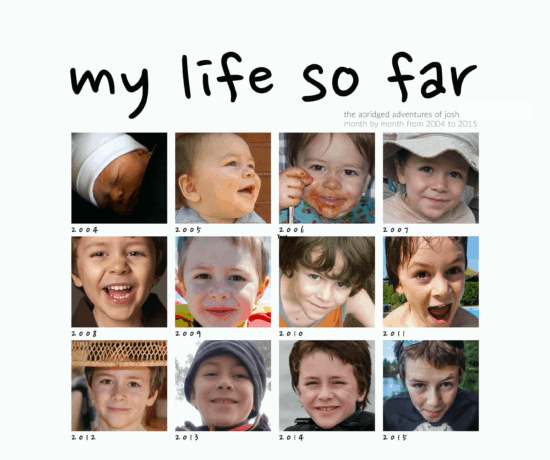For this post, we welcome contributing author Katherine Katsenis, owner of Panos Productions Photography Los Angeles to hear about some of the ways to think about your photo organizing strategy.
Take it away, Katie!
Let’s Simplify!
Are you tired of digging through folders of unorganized photos on your computer or phone? Do you want to easily access and share your family memories or genealogy research? If so, implementing effective photo organization strategies can make a world of difference. In this blog post, we will explore some of the best apps, programs, and tactics to streamline your photo organization process, whether it’s for family albums or genealogy projects.
Understanding the Basics of Effective Photo Organization
To effectively organize your photos, initiating with a methodical approach is crucial. One helpful strategy is to create a standardized file naming convention. This could involve including the date, event, or individuals featured in the photo. For instance, “2023-04-01_JohnDoe_Birthday.jpg” offers a clear, immediate insight into the content and timing of the photo at a glance. Additionally, it’s advantageous to group your photos based on specific themes or events. This might mean having separate folders for family vacations, holidays, or significant milestones. Such categorization not only aids in quicker retrieval but also helps in maintaining a tidier digital space.
Another foundational aspect of photo organization involves regular backups of your photo library. Utilizing external hard drives or cloud storage solutions can safeguard your memories against accidental loss due to hardware failure or other unforeseen circumstances. This practice ensures that your photos remain secure and retrievable over the years.
Employing best practices forms the cornerstone of efficient photo management. They allow for a smoother transition into using more sophisticated tools and platforms for photo organization, as outlined in subsequent sections of this blog. By adhering to these preliminary steps, you create a well-structured photo library that can be easily navigated, searched, and expanded upon with minimal effort.
Popular Apps for Organizing Family Photos
Navigating the plethora of options for photo organization apps can be daunting, yet a few stand out for their user-friendly interfaces. Google Photos, for instance, is renowned for its powerful search capabilities and unlimited storage for high-quality photos, making it a popular choice for those looking to store countless memories without worry about space constraints.
One of the many drawbacks to freemium services like Google and Dropbox, however, is that files are compressed. This means that files lose information.One way to work around these problems is to subscribe to online web gallery services such as Smugmug, ZenFolio, or Forever.com.
Top Photo Organizing Apps
Adobe is a household name for a reason. They offer a solution for every possible digital image problem you have, so let’s talk about the products that may best help photo organizers.
Adobe Lightroom appeals to those with a keen eye for detail, offering sophisticated editing tools alongside its organizational capabilities, such as tagging and album creation. Lightroom, by design, is an organizational platform. Yes, you can also do a lot of editing, but it was created to allow for sorting, assigning keywords, color coding, and more. Lightroom also has a mobile version for your phone and you can sync with LR on your desktop. This could really come in handy if you are in a library or archives and want to compare images you see on microfilm, with ones you have back at home.
If you do not care about being able to edit photos, Adobe Bridge offers a robust organizing platform with search features, keywords, color coding, and rating. Best, you can do these things to groups of images all at once, called ”batching.” By contrast, Apple Photos is tailored for users deeply integrated into the Apple ecosystem, providing seamless synchronization across all devices with features like facial and location recognition to effortlessly categorize images.
Apps like these not only simplify the task of sorting through vast photo collections but also enhance the experience by introducing elements like shared albums, which allow multiple users to contribute and access a collective pool of memories. The emphasis on cloud storage across these platforms ensures that your cherished moments are safeguarded against accidental loss and are accessible from any device, anytime – as long as you understand syncing and how the cloud works.
Leveraging these apps effectively transforms the overwhelming task of photo organization into a more manageable and even enjoyable process, granting you the freedom to relive your favorite moments with ease. By adopting one or a combination of these tools, you position yourself to maintain a beautifully organized digital photo library that honors your family’s history and is prepared for future generations to cherish.
Popular Platforms for Genealogy Enthusiasts
Genealogy enthusiasts often find themselves with a trove of historical photographs and documents that require careful organization to effectively complement their research. Identifying the right programs can significantly enhance the process of linking photos with family history, allowing for a rich, visual narrative to unfold.
One of the most popular options is Ancestry.com, a comprehensive platform that not only facilitates the creation and exploration of family trees but also supports the uploading and categorization of family photographs. Its user-friendly interface simplifies the process of connecting visual memories to specific individuals or events in your genealogical data, thus enriching your family’s story. Additionally, the platform offers tools for photo annotation, which can be crucial for noting important details or context that might otherwise be lost over time. That being said, it wasn’t specifically designed for managing thousands of photos, so it’s best used for family tree illustration purposes.
Similarly, FamilySearch, a free service, provides many fun features for integrating photos into your genealogical research. It allows users to create digital family albums and directly link images to individuals in their family tree. What sets FamilySearch apart is its strong community focus, encouraging collaboration among users to share photos, stories, and research, thereby potentially unlocking new connections and insights into your ancestry. However, just like with Ancestry, it’s not ideal for managing larger family archives, unless you create a two-way sync between your GedCom file, your cloud account, and your photo library.
RootsMagic offers an interesting software program that includes photo organizing capabilities tailored to the needs of genealogists. It facilitates the easy attachment of photos to individuals, events, or sources, making it simpler to visualize connections and historical context. Unfortunately, it doesn’t provide enough batch processing capabilities to make it a strong solution for digital asset management. Genealogy enthusiasts who choose to combine these platforms with solid digital asset management solutions ensure that their photo organization efforts are not just about preservation but also about storytelling, bringing the faces and places of their ancestry to life in compelling ways.
Utilizing Cloud Storage for Easy Access and Sharing
Cloud storage platforms have revolutionized how we manage and share our photo collections, offering a level of accessibility and convenience previously unattainable. Services such as Google Drive, Dropbox, and iCloud stand at the forefront of this innovation, providing convenient environments where photos can be stored in the cloud. This technological advancement means that whether you’re on a computer at home or using a mobile device while on the go, your entire photo library is just a few clicks away. One of the most significant advantages of these platforms is their facilitation of photo sharing. With cloud storage, inviting family members to view a newly organized album of ancestral photos or sending a link to a shared folder can be particularly beneficial for genealogy projects, where sharing and collaborating on historical photographs can unearth new family insights and stories.
Cloud storage solutions often come with features that enhance library maintenance. Many offer automatic syncing, ensuring that any additions or changes made to a folder on one device are updated across all devices linked to the account. This seamless synchronization keeps your photo library current, without requiring manual updates. Additionally, some platforms provide the capability to create shared spaces where multiple users can contribute photos, further enriching the family’s collective memory bank. This collaborative aspect not only strengthens family bonds but also distributes the responsibility of photo management, making it a more manageable and engaging task for everyone involved. By carefully integrating cloud storage into your photo organization strategy, you secure a flexible and dynamic solution that supports both the preservation and sharing of precious memories, making it an indispensable tool in the modern era of digital photography.
Besides those already mentioned above, some other popular cloud storage platforms are:
- Microsoft OneDrive – offers great storage options and is affordable.
- iDrive – works with Mac and PC, Android and Apple
- Proton Drive – Best if you need encryption for privacy protection
Tactics for Keeping Your Photo Library Manageable
Maintaining an organized photo library requires ongoing effort and a few key practices. First, adopting a habit of periodic review and cleanup is essential. Dedicate time each month to sort through recent photos, deleting any that are redundant, blurry, or fail to bring value to your collection. This not only frees up space but also ensures that your library remains curated and meaningful. Another effective tactic involves the use of smart albums or tags, features offered by many photo organization apps and programs. By setting criteria based on dates, locations, people, or events, these tools can automatically sort your photos into relevant albums, drastically reducing manual sorting time.
For those with vast collections, investing time in training facial recognition technology available in certain apps can also be beneficial. Once configured, this feature can automatically group photos by the people in them, making it easier to find and organize images related to specific family members or friends. Additionally, leverage the power of cloud storage by regularly syncing your photo library. This not only serves as a backup but also helps in decluttering your primary devices. It’s advisable to review your cloud storage occasionally, ensuring it mirrors the organized state of your local copies. Implementing these strategies can transform the daunting task of photo organization into a manageable routine, allowing you to keep your digital memories orderly and accessible with minimal stress. If you need further help on getting started, we welcome you to enroll in our masterclass DPO PRO, the original photo organizing course.
Creative Ways to Enjoy and Share Organized Photos
With your photos now neatly organized, it’s the perfect opportunity to bring those memories off the screen and into the real world. Crafting personalized photo books is a wonderful way to compile themed collections, such as family vacations or significant milestones, into tangible keepsakes. For a unique touch, consider designing custom calendars featuring family photos for each month – they make for thoughtful gifts or a delightful way to relive memories throughout the year. Hosting a “photo night” can also foster family bonding, where everyone gathers to view slideshows of curated photo albums, sparking stories and laughter over shared memories. Additionally, leveraging social media or dedicated family websites for sharing collections can keep distant relatives connected, allowing them to partake in the joy and nostalgia of your family’s cherished moments. These creative endeavors not only celebrate your organized photos but also deepen connections with those you hold dear, turning organized pixels into shared experiences and lasting mementos.
Featured Photo Courtesy of Alexander Dummer





